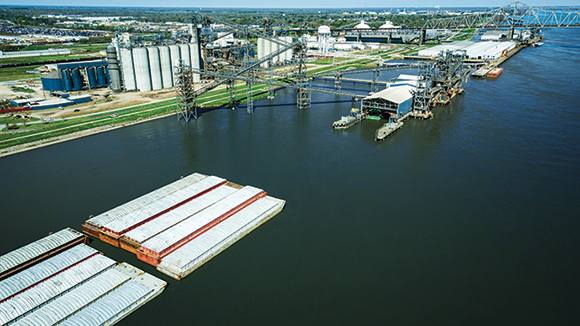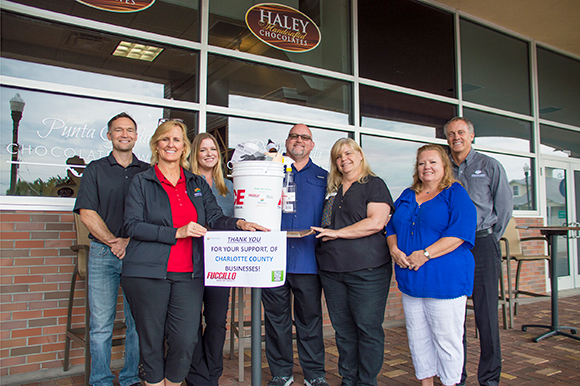| |

| FROM SITE SELECTION MAGAZINE MAY 2020 |
 |
SPECIAL REPORT
Fortune 500 companies, national urban policy experts, Amazon Air, university innovation leaders, aerospace suppliers and everyone involved with new Major League Soccer team FC Cincinnati all seem to agree: The tri-state Greater Cincinnati region has something special going on.
|
|
 |
INVESTMENT PROFILE: WEST BATON ROUGE PARISH, LOUISIANA
West Baton Rouge packs a lot of punch in a small package.
|
|
| CONWAY ANALYTICS SNAPSHOT |
|
The American Health Care Association and National Center of Assisted Living is advocating for $10 billion in emergency relief funding from U.S. Health and Human Services (HHS) in order to fund expedited testing and the additional staffing needed to respond to the pandemic. The cost to test all of those 2,931,478 individuals just once would be $440 million. A CDC recommendation to test all nursing home staff weekly would cost more than $1 billion every month.
In a table showing what testing would cost, AHCA/NCAL shared the numbers of nursing homes, residents and staff in each state. Adding in general state population figures, we can glimpse which states have the highest and lowest ratios of nursing homes per 100,000 state residents, and which have the highest and lowest numbers of residents per facility, among other variables. In addition to providing insight as these states battle COVID-19, such data shed light on where more facility and health-care job development opportunities may exist. With the exception of Rhode Island, states with the most nursing homes per capita comprise a solid block in the middle of the country. Meanwhile, some of the states with the highest densities of nursing home residents have been among the hardest hit by the pandemic. Below are three ways to examine the data. Explore it yourself with our complete spreadsheet. — Adam Bruns, Daniel Boyer and Mark Bertram
Most Nursing Homes per 100K Population
| State |
2019 State Population |
Nursing Facilities |
Nursing Facilities Per 100K |
| IA |
3,236,212 |
434 |
13.41 |
| SD |
899,158 |
105 |
11.68 |
| KS |
2,966,501 |
331 |
11.16 |
| NE |
1,970,921 |
201 |
10.20 |
| ND |
788,958 |
80 |
10.14 |
| MO |
6,255,541 |
522 |
8.34 |
| OH |
11,805,053 |
957 |
8.11 |
| IN |
6,788,130 |
534 |
7.87 |
| RI |
1,071,101 |
80 |
7.47 |
| OK |
4,031,901 |
298 |
7.39 |
Most Nursing Home Residents Per Facility
| State |
2019 State Population |
Nursing Facilities |
Nursing Home Residents |
Residents per Facility |
| NY |
20,030,453 |
619 |
104,383 |
168.63 |
| NJ |
9,127,159 |
363 |
43,315 |
119.33 |
| PA |
13,012,438 |
695 |
75,847 |
109.13 |
| MD |
6,120,651 |
226 |
23,861 |
105.58 |
| FL |
21,239,528 |
701 |
73,312 |
104.58 |
| CT |
3,632,883 |
215 |
22,156 |
103.05 |
| AL |
5,002,985 |
228 |
22,962 |
100.71 |
| MA |
6,958,093 |
376 |
37,577 |
99.94 |
Most Nursing Home Residents Per Staff Member
| State |
Nursing Facilities |
Nursing Home Residents |
Nursing Home Staff |
Residents Per Staff Member |
| WV |
123 |
9,519 |
9,350 |
1.12 |
| OR |
130 |
7,352 |
11,950 |
1.05 |
| WI |
359 |
22,043 |
29,420 |
1.02 |
| GA |
358 |
33,387 |
33,720 |
0.99 |
| NE |
201 |
11,029 |
14,500 |
0.98 |
| LA |
278 |
26,137 |
26,880 |
0.97 |
| KS |
331 |
17,021 |
17,890 |
0.95 |
| UT |
99 |
5,723 |
9,360 |
0.95 |
| TN |
316 |
27,164 |
33,760 |
0.94 |
| NH |
74 |
6,476 |
6,590 |
0.91 |
|
|
  |
FLORIDA
Orlando’s theme parks may not be open yet, but industrial development continues. California-based CarbonLITE, the world’s largest producer of food-grade post-consumer recycled PET, has announced it plans to build somewhere in the Orlando area an $80 million manufacturing plant for turning used plastic bottles into pellets. CarbonLITE already operates plants in Riverside, California, and Dallas, Texas, and opened another $80 million plant in Reading, Pennsylvania, early this year that will produce up to 85 million tons of pellets a year. Plastics Recycling News reported in February that “CarbonLite CEO Leon Farahnik said the company chose Florida because the reclaimer sees strong demand from its customers in that area. CarbonLite supplies major bottling operations including Nestle Waters North America and Niagara Bottling,” which is building a bottling plant in Florence, South Carolina.
UNITED KINGDOM
Pivotal (a rebrand of the former RMS Group) will open a new 25-job center in Leeds as part of a UK-wide expansion that will also see new locations in the South East, Bristol and Scotland, where a new center will open in Glasgow in June. The provider of cash collection, delivery and ATM services maintains its UK headquarters in Slough. Launched from one branch in Belfast, Northern Ireland in 2005, the company currently has eight locations across the UK and the Republic of Ireland.
|
|
| SITE SELECTION RECOMMENDS |
|
The Urban Land Institute’s latest Real Estate Economic Forecast, released yesterday and based on a May 2020 survey of 39 economists and analysts at 35 leading real estate organizations, concludes that the pandemic’s impact on real estate market conditions and values will be much less severe than the 2008 financial crisis (with the notable exceptions of retail and hotels), but the unknowns of the global pandemic temper their expectations. Predictions from the semi-annual survey, which covers the forecast period of 2020 through 2022, include the following:
- U.S. GDP is expected to fall by 6% this year, which would be the largest single year decline since 1946. GDP is expected to grow 3.9% in 2021 and 3.6%in 2022, both well above the long-term average of 2.1%.
- Commercial real estate price growth as measured by the Real Capital Analytics Commercial Property Price Index (CPPI) is projected to fall by 7% in 2020, less than the 13.6% and 20.8% decrease during 2008 and 2009, respectively. “Economists believe that one reason for this is more debt financing is expected to be more available than it was during the 2008 financial crisis,” ULI stated.
- Rent growth expectations for the next three years are expected to be led by the industrial sector, averaging 2.2% from 2020 to 2022.
|
|
 |
Among the businesses receiving assistance this week from the Charlotte County EDO was Punta Gorda Chocolate & Wine.
|
|
As Site Selection readers will learn more about in our July special edition, economic development agencies across the nation and the world are pivoting just like the companies they work to attract and retain. Some are shifting their half-cent sales tax funds from attraction efforts to helping existing companies stay in existence. And some are directly serving businesses in their daily needs. The Charlotte County Economic Development Office in Florida, through its “Ready … Set … Reopen” initiative, this week loaded a convoy of vehicles with buckets of cleaning supplies and PPE for delivery to 100 local businesses preparing to reopen. |
|
|
|

